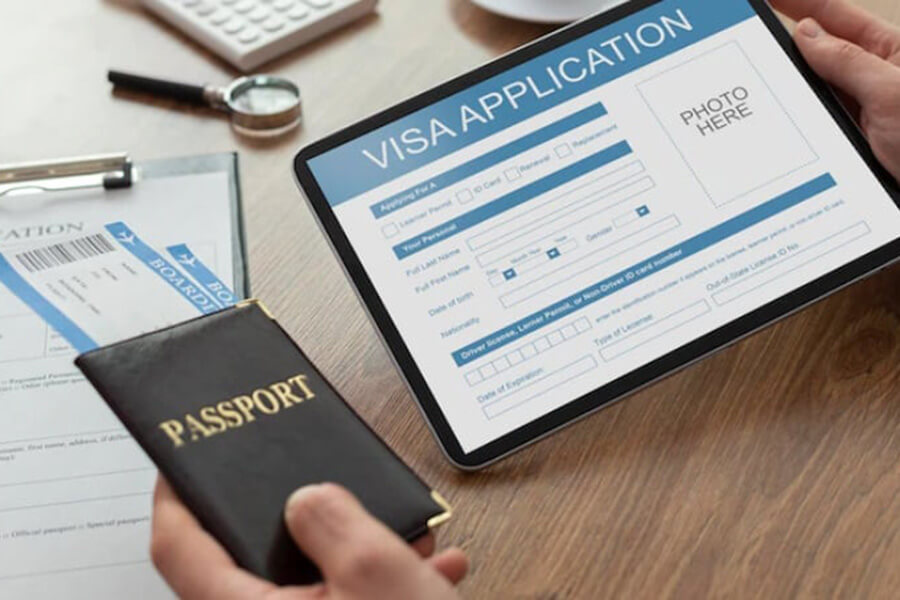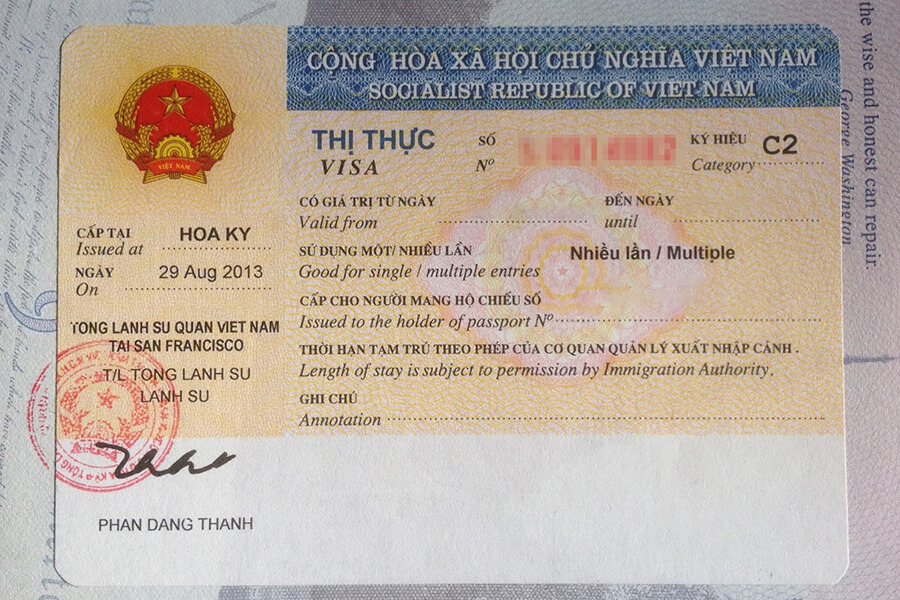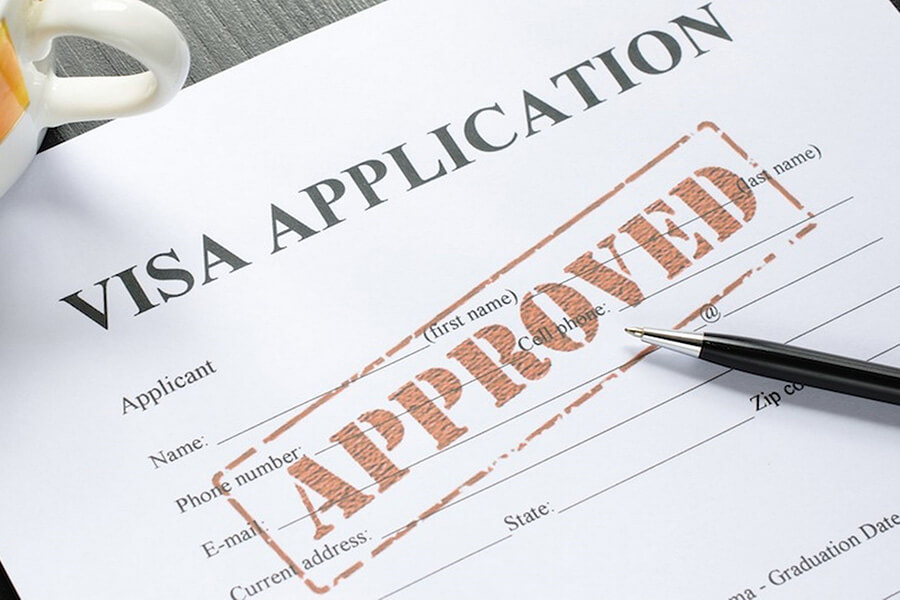Vietnam Visa Guide
Vietnam visa is important for individuals traveling to Vietnam for leisure or business purposes. You must have a valid passport and Vietnam visa (or visa approved letter from a licensed Vietnam tour operator) to enter Vietnam. You must have at least one blank visa page in your passport, and it must remain valid for six months after your intended stay. Please be aware that the six-month period begins on the day of your entry into Vietnam, not when you apply for a visa.
Vietnam visa applications can be submitted from 1 day to 6 months in advance. While the processing time for visa approval is typically 2-3 working days, it is advisable to submit your application 1-2 weeks before your planned arrival to prevent potential payment or administrative complications. Opting for urgent 24-hour or 72-hour visas can incur significantly higher costs, and entry is not guaranteed.
Vietnam Visa Exemption
Vietnam's new visa regulations, which go into effect on August 15, 2023, increase the length of the stay for 13 countries that are free from the requirement for a visa from 15 to 45 days, irrespective of the type of passport or reason for admission. Among the 13 countries are the following: Japan, Korea, Korean Republic, Denmark, Sweden, Norway, Finland, Belarus, France, Italy, Spain, and the United Kingdom.
If you plan to fly to Vietnam and intend to obtain a visa upon arrival at the airport, you will need a Vietnam visa approval letter. This document, also known as a pre-approval visa letter or visa on arrival approval letter, is issued by the Vietnam Immigration Department through a local travel agency. It serves as official authorization for the traveler to board a flight to Vietnam and facilitates the visa stamping process upon arrival at the Vietnamese airport. The Vietnam visa approval letter includes information about the authorized individual(s) entering Vietnam, such as their full name, passport number, date of birth, nationality, and the duration of their stay in Vietnam. Additionally, it confirms the holder’s permission to enter Vietnam and have their visa stamped at the airport.
Visa Approval Letter processing fee:
1 - One-month Single-entry Visa: US$15.
2 - One-month Multiple-entry Visa: US$30.
Note: The Visa Stamp Fee (US$25 for single entry or US$50 for multiple entry) is not included in the above cost and must be paid to immigration officers upon arrival at the airport.
Vietnam Electronic Visa (E-visa)
Starting on August 15, 2023, Vietnam now issues e-visas to citizens of all countries and territories, allowing for a 90-day stay and permitting multiple entries. According to the most recent information provided by the government, visitors from the following 25 countries are not required to apply for a Vietnam visa in order to enter Vietnam:
Europe
| Asia | Others |
| United Kingdom (UK) (Not applicable to BNO): 45 days | Cambodia: 30 days | Chile: 90 days |
| Sweden: 45 days | Indonesia: 30 days | Panama: 90 days |
| Spain: 45 days | Kyrgyzstan: 30 days | |
| Norway: 45 days | Laos: 30 days | |
| Italy: 45 days | Malaysia: 30 days | |
| Germany: 45 days | Singapore: 30 days | |
| France: 45 days | Thailand: 30 days | |
| Finland: 45 days | Philippines: 21 days | |
| Denmark: 45 days | Brunei: 14 days | |
| Belarus: 45 days | Myanmar: 14 days | |
| Russia: 45 days | Japan: 45 days | |
| South Korea: 45 days |
While the majority of the mentioned countries do not impose any conditions for Vietnam visa exemption, it is essential to pay attention to specific notes if your country is included in the list:
- For Chile, Panama, and Singapore: Your reasons for entries do not include remunerated activities (to work & earn money)
- For Myanmar: only for visiting (friends, family,…)
- For Malaysia: only for Tourism, attending press, conference/coverage, official duty, visiting relatives, business negotiation, investment, sports, or attending seminars or conferences

Here is the list of border gates that allow foreigners enter and exit Vietnam by E-visa:
- 13 international airports: Noi Bai (Ha Noi), Tan Son Nhat (Ho Chi Minh City), Cam Ranh (Khanh Hoa), Da Nang, Cat Bi (Hai Phong), Can Tho, Phu Quoc (Kien Giang), Phu Bai (Thua Thien Hue), Van Don (Quang Ninh), Tho Xuan (Thanh Hoa), Dong Hoi (Quang Binh), Phu Cat (Binh Dinh), Lien Khuong (Lam Dong).
- 16 land border gates: Tay Trang (Dien Bien), Mong Cai (Quang Ninh), Huu Nghi (Lang Son), Lao Cai, Na Meo (Thanh Hoa), Nam Can (Nghe An), Cau Treo (Ha Tinh), Cha Lo (Quang Binh), La Lay and Lao Bao (Quang Tri), Bo Y (Kon Tum), Moc Bai and Xa Mat (Tay Ninh), Tinh Bien and Vinh Xuong (An Giang), Ha Tien (Kien Giang).
- 13 sea border gates: Hon Gai and Cam Pha (Quang Ninh), Hai Phong, Nghi Son (Thanh Hoa), Vung Ang (Ha Tinh), Chan May (Thua Thien Hue), Da Nang, Nha Trang (Khanh Hoa), Quy Nhon (Binh Dinh), Dung Quat (Quang Ngai), Vung Tau (Ba Ria - Vung Tau), Ho Chi Minh City, Duong Dong (Kien Giang).
Vietnam Visa Application
Option 1: Traditional Visa Application
Apply at the Vietnamese Embassy or Consulate for a typical stamped visa. You can either do this in person or by mail. To continue, complete and sign an application, then mail it together with a copy of your passport and a picture of yourself. The cost varies according to the particular Consulate or Embassy.
Option 2: Vietnam E-Visa (Effective from August 15, 2023)
All nations can now apply for Vietnam's E-visa, which provides single-entry or multiple-entry options for stays of between 30 and 90 days. How to get an E-visa for Vietnam is as follows:
- Access the official E-visa application website.
- Upload two photos in .jpg format: the passport data page image and a portrait photo (4x6 cm).
- Fill out the required fields on the online form and submit it.
- Pay the E-visa fee of US$25 to complete the application, making sure to note down the provided registration code.
- No email confirmation will be sent; use the registration code to check and print your E-visa. The validity period starts from the specified date, allowing entry into Vietnam with a valid passport and printed E-visa.
Option 3: Vietnam Visa On Arrival (VOA)
If you are planning a multiple-entry visit or a stay exceeding 30 days, consider obtaining a visa on arrival for entry into Vietnam, particularly if you are arriving by air.
How to Apply for a Vietnam Visa?
Options based on the nationality and passport of the applicant:
- Direct Application: Individuals can apply for a Vietnam visa in person or by mail at the nearest Vietnam Embassy/Consulate.
- E-Visa: Implemented since February 2017 for visitors from specific countries, this is a relatively new system. For more information on this option, visitors can refer to the website: https://evisa.xuatnhapcanh.gov.vn/web/guest/khai-thi-thuc-dien-tu/cap-thi-thuc-dien-tu
- Through Travel Company: Travelers have the option to apply for a Vietnam visa online through travel agencies like Viet Vision Travel. The visa stamp will be issued upon arrival at the airport (Visa on Arrival). If this option is chosen, please see Viet Vision Travel Visa on Arrival (VOA) Service.




